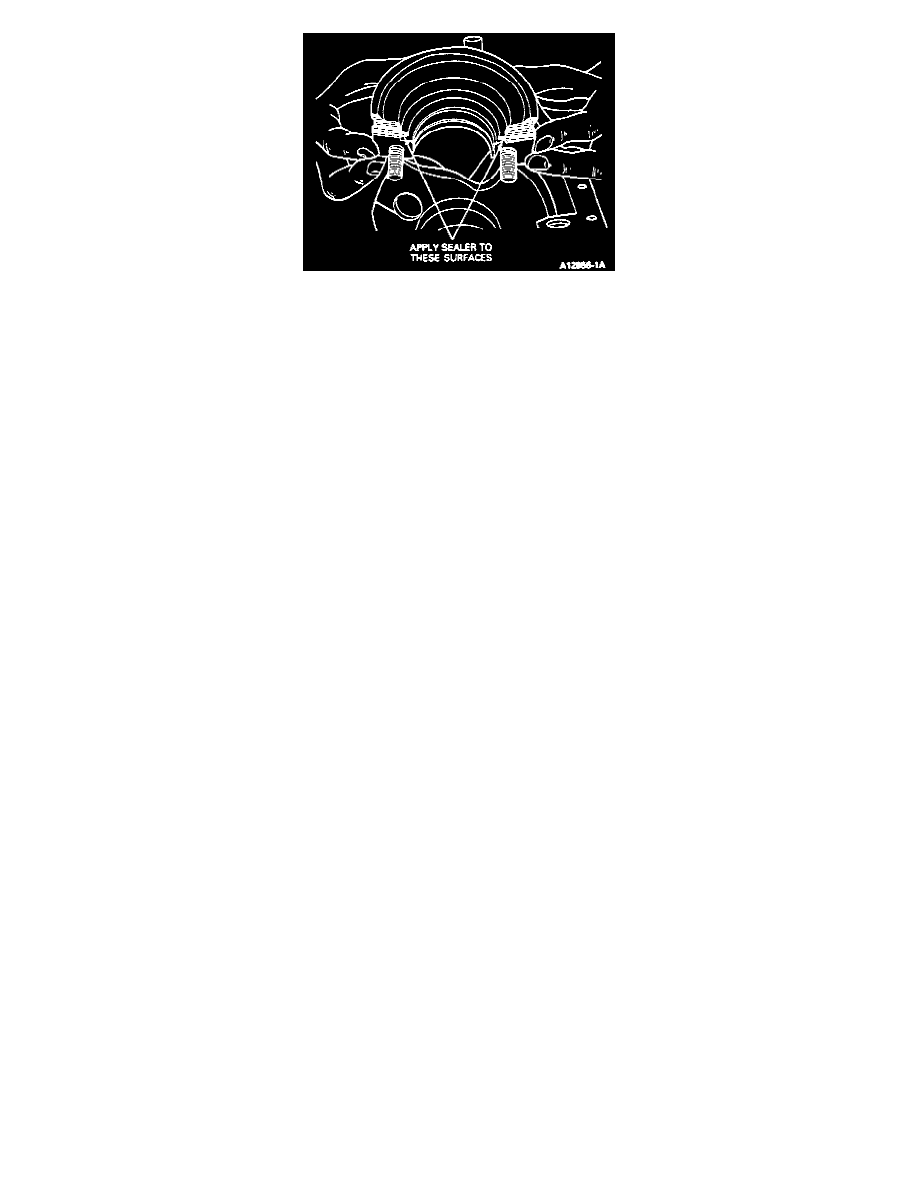Explorer 2WD V6-245 4.0L (1994)

Rear Main Bearing Cap View
8.
Coat the main bearing insert and crankshaft journal with SAE 50 Service SG (ESE-M2C39-F) oil, apply Loctite(R) 515 sealer to the rear main
bearing cap as shown in the illustration. Verify the main bearing insert is properly installed.
9.
Align the rear main bearing cap to block by moving the bearing cap fore or aft so the rear seal stop (located approximately 1/2 inch inward in the
rear oil seal bore) of the block and cap line up. This will assure the rear main oil seal will seat properly when installed in the bore.
NOTE: The rear main bearing cap MUST be aligned and installed properly to seal. Misalignment will cause an oil leak.
10.
New rear main bearing cap bolts must be used. Tighten the bolts evenly to 90-104 Nm (66-77 ft lb).
CAUTION:Use a new oil seal. Failure to install a new seal, or incorrect seal installation will result in an oil leak after the vehicle is returned to
service.
11.
Use a new wedge seal. Fill the cavities for the wedge seal on both sides of the rear main cap and the small groove in the oil pan gasket area of the
rear main cap with Loctite(R) 515 sealer.
12.
Place wedge seal in position and use a flat blade screwdriver or equivalent to fully seat the wedge seal, forcing the excess sealer out around the
seal. Do not remove the excess sealant.
13.
Clean and inspect the oil inlet tube. Prime the oil pump by filling the inlet opening with oil while rotating the shaft until oil emerges from the outlet
opening. Install the pump and screen and tighten the screws to 17-21 Nm (13-15 ft lb).
14.
Install the oil baffle assembly and tighten the nuts to 17-21 Nm (13-15 ft lb).
15.
Determine if shim spacers will be required at installation.
NOTE: The transmission bolts to the engine and oil pan when installed, so it is important to measure the gap between the surface of the rear face
of the oil pan (at the spacer locations) and the rear face of the engine block. Refer to the steps a,b,c, and d below for checking this
dimension.
CAUTION:Failure to measure the required spacer thickness will result in insufficient or excessive clearance between the engine oil pan and the
transmission when installed in the vehicle. This can result in oil pan damage and/or an oil leak.
